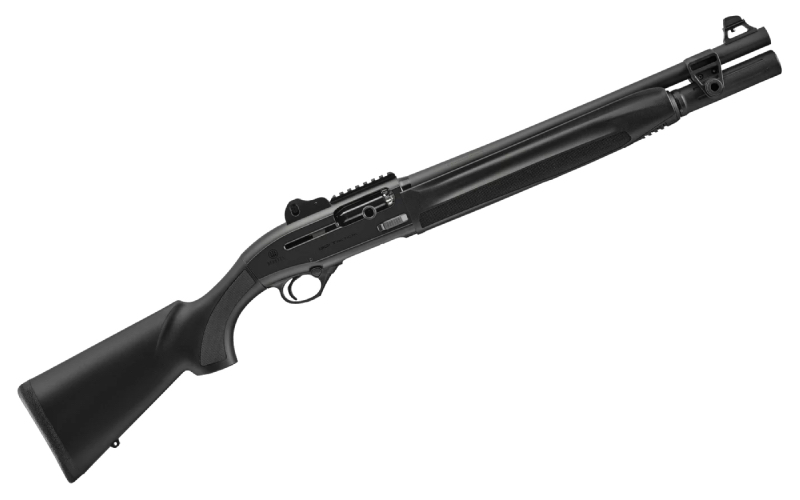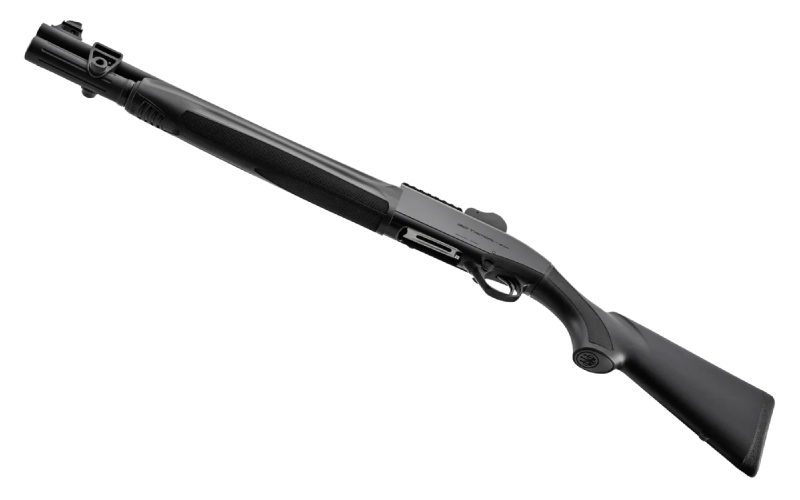Beretta 1301 Tactical: Evolution and Enhancement Opportunities
Author: Marko L. | Publish Date: May 15, 2025 | Fact checked by: Aleksa Miladinovic
The Beretta Tactical Shotgun Legacy
While the recently introduced A300 Ultima Patrol has garnered attention, Beretta's modern tactical shotgun heritage can be traced back to the inertia-operated 1200/1201 series. This evolutionary path continued through gas-operated models like the TX4 Storm before culminating in the 1301 Tactical, which officially debuted in 2014. The 1301's decade-long market success has played a pivotal role in solidifying Beretta's reputation in the tactical shotgun segment.

Engineering Excellence: The B-Link System
Revolutionary Gas Operation
The 1301 Tactical, like its TX4 and A400 predecessors, is constructed around an aluminum receiver and features Beretta's proprietary B-Link short-stroke gas system—arguably the most crucial element contributing to these shotguns' exceptional performance. This sophisticated system operates in conjunction with a chrome-plated rotating bolt, utilizing gas vented from dual ports positioned near the barrel's midpoint to rapidly activate a sealing piston (functionally similar to AR-15 bolt gas rings). This piston drives a bolt-carrier assembly consisting of a shroud and two robustly welded action bars.
Performance Advantages
The B-Link system delivers several significant performance benefits that distinguish the 1301 from competitors:
Exceptional Cycling Speed
The system's cycling speed is remarkable—noticeably faster than what shooters experience with standard carbine-length 5.56 NATO AR-15s using carbine springs and H1 buffers. This translates to faster follow-up shots in tactical situations.

Versatile Ammunition Compatibility
The B-Link's innovative design enables reliable cycling across a broad spectrum of shotshell loads, including lighter-recoiling training ammunition—a valuable feature for practice sessions and skill development.
Enhanced Recoil Management
Beyond its durability, the B-Link action excels at mitigating the substantial felt recoil typically associated with 12-gauge loads, improving shooter comfort and control during extended sessions.
Weight Optimization
Despite its robust construction, the gas system contributes to maintaining the shotgun's relatively light overall weight, enhancing maneuverability in confined spaces.
Premium Barrel Technology
Complementing the gas system, Beretta's high-quality "Steelium" alloy barrels deliver consistent pattern performance. The combination of this advanced barrel technology with the B-Link system positions the 1301 as a premier contender in today's tactical semi-automatic shotgun market.
Customization Evolution
While Beretta now offers several factory-equipped 1301 variants in its catalog, this wasn't always the case. First-generation 1301 Tactical models and early "Mod2" shotguns featured minimal configuration directly from the factory. Standard equipment included a five-round magazine, original equipment manufacturer (OEM) synthetic furniture, and the factory sight package consisting of a rear adjustable LPA ghost-ring with Picatinny base and a photoluminescent front sight protected by a sight base.
For many users, strategically integrating aftermarket accessories throughout the shotgun became essential to transform it into a more versatile and effective tactical tool. This customization approach allowed owners to tailor their 1301 Tacticals to specific operational requirements and personal preferences.
Author:
Marko Lalovic

Marko is a dedicated aviation enthusiast whose passion began with an unforgettable encounter with fighter jets at an air show in his home country. As an audiophile and sound engineer by training, Marko was initially captivated by the distinctive sonic signature of military aircraft—the thunderous roar of afterburners and the precise mechanical symphony of aviation systems. This auditory fascination evolved into a comprehensive interest in defense technology, particularly firearms engineering and ballistics acoustics.